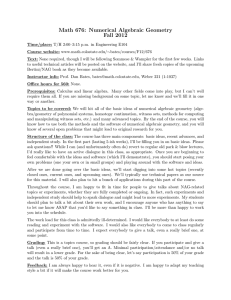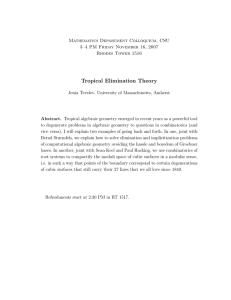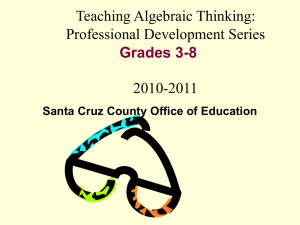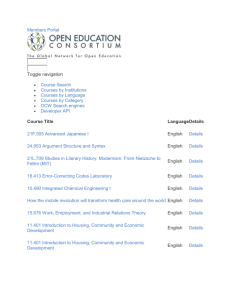Instructions for talk in Math 676: Computational Algebraic Geometry Spring 2009 (Bates)
advertisement
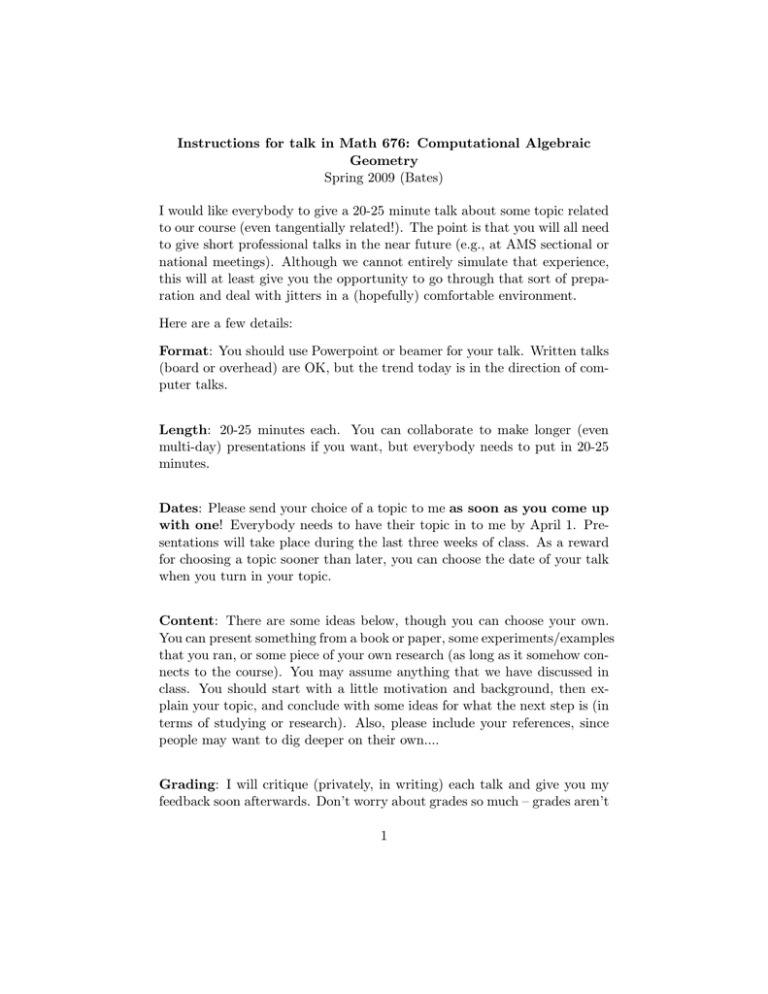
Instructions for talk in Math 676: Computational Algebraic Geometry Spring 2009 (Bates) I would like everybody to give a 20-25 minute talk about some topic related to our course (even tangentially related!). The point is that you will all need to give short professional talks in the near future (e.g., at AMS sectional or national meetings). Although we cannot entirely simulate that experience, this will at least give you the opportunity to go through that sort of preparation and deal with jitters in a (hopefully) comfortable environment. Here are a few details: Format: You should use Powerpoint or beamer for your talk. Written talks (board or overhead) are OK, but the trend today is in the direction of computer talks. Length: 20-25 minutes each. You can collaborate to make longer (even multi-day) presentations if you want, but everybody needs to put in 20-25 minutes. Dates: Please send your choice of a topic to me as soon as you come up with one! Everybody needs to have their topic in to me by April 1. Presentations will take place during the last three weeks of class. As a reward for choosing a topic sooner than later, you can choose the date of your talk when you turn in your topic. Content: There are some ideas below, though you can choose your own. You can present something from a book or paper, some experiments/examples that you ran, or some piece of your own research (as long as it somehow connects to the course). You may assume anything that we have discussed in class. You should start with a little motivation and background, then explain your topic, and conclude with some ideas for what the next step is (in terms of studying or research). Also, please include your references, since people may want to dig deeper on their own.... Grading: I will critique (privately, in writing) each talk and give you my feedback soon afterwards. Don’t worry about grades so much – grades aren’t 1 the point of this exercise. References: See below. ALSO, the IMA (www.ima.umn.edu) tapes all lectures given there, and the 2006–2007 calendar year was about Applications of Algebraic Geometry. The topics covered in many of those talks may be a bit too advanced or off in left field for us, but they are worth watching anyway. Here are a few ideas for talks (though a more complete list will be available in Appendix A of the course notes): • Solve some class/instances of polynomial systems in various ways/packages. The solution of polynomial systems is (obviously) a key part of this course, so more experience with this is certainly worthwhile in terms of the course goals. CLO1 and SW have nice sets of examples from kinematics. Jan Verschelde’s website (at UIC) has dozens of systems from various sources. I can give you other references, too. • Give a rough idea of Faugere’s F4 and F5 algorithms. Full details would probably be too cumbersome, but a quick idea of how it works, along with an example or two to show the speed would be nice. • Discuss computation on elliptic curves (basic or advanced). You tell me a good reference for this.... • Syzygies, free resolutions, Betti numbers, etc. This could eat a little time, so it might be best tackled in tandem (though you can go it alone, too, if you like). Schenck’s book is good for this. • Parallel computation of Gröbner Bases (or lack thereof ). Word on the street is that they don’t. This might tie in nicely with a talk on Faugere’s methods, though you might want to collaborate with somebody else in that case. We could dig around a bit for the best reference about this. • Basic toric or tropical geometry. I have references for each, but I’ll need to dig them up. • A CoCoA demo, since we probably won’t get a chance to look at CoCoA during regular class/lab time. • An R demo, for the same reason. • Prove that Buchberger’s algorithm is correct and terminates, as found in CLO1. 2 • Explain and connect the ascending chain condition to what we have discusse din class. • Describe Hilbert functions and polynomials (and maybe define dimension). • Describe a Gröbner basis conversion algorithm, like FGLM or Gröbner walks. I can cook up some references here. • Discuss the complexity of Gröbner bases. Mayr/Meyer and Bayer/Mumford (harder!) might be handy. • Choose your own adventure. I am fine with you cooking up your own topic. Please run it by me for approval, though. I hope that everybody’s talk will somehow involve some aspect or application of computation in some bit of algebraic geometry. 3
